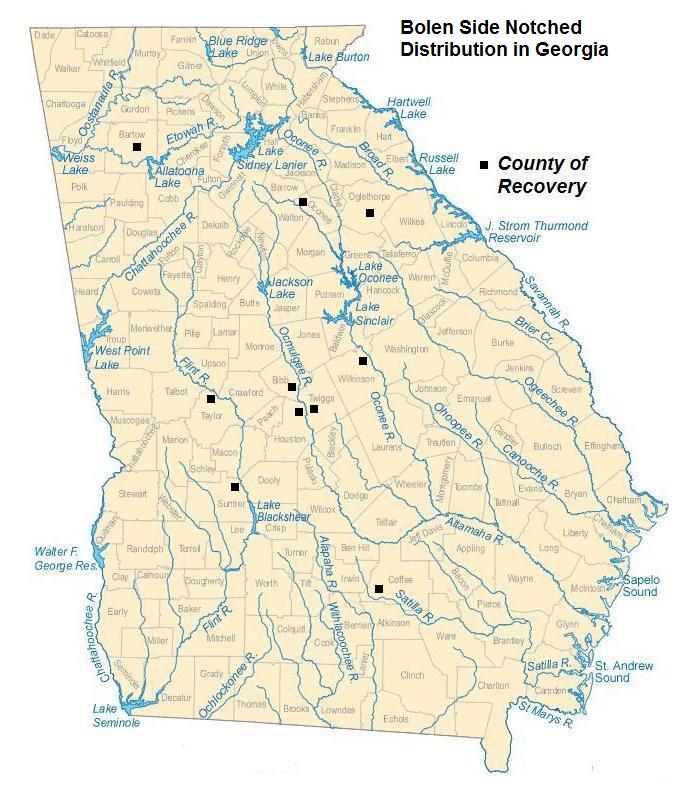Bullen’s type 2 Bolen has an excurvate basal edge and clearly does not fall in the Taylor or Big Sandy classification.
Bullen’s type 3 might be classified as a Kirk Corner Notch by some, but the notch is very high for a Kirk and the barbs never come as far down as the Kirk. The Southeastern Hardin seems most closely related to the type 3, but the Hardin form is never beveled.
Bullen’s type 5 has a square notch that us formed by the removal of flakes from the upper and lower corners of the notch. The basal edge is thin and is flat to convex in contrast to the heavy, square-corners of the Taylor Side Notched point.
The “E” notched Bolen was not recognized by Ripley Bullen, but has been widely recognized by collectors. Like the Thebes point, the notch us formed by the removal of flakes from the upper and lower corners of the notch while leaving a central protrusion in the center of the notch.
The “Ace” Bolen was named because of its resemblance to the Ace of Spades in a deck of cards. These points are unbeveled, have serrated blade edges, and have an excurvate base. They are essentially a type 2 Bolen that has yet to be resharpened.
The Recurved Bolern has a recurved basal line due to a thinning flake having been removed from the central portion of the base.
The Wide Notched Bolen has an expanded notch. While these points can be found almost anywhere in peninsular Florida north of Lake Okeechobee, they are especially numerous in the area of Palatka, Florida.
Name: Ripley P. Bullen named the Bolen point for Bolen Bluff, located along the southern edge of Payne’s Prairie in Gainesville, Florida. Bullen identified several sub-types in this family of points. His type 2 is the most dominant type in Georgia. The corner notched type 4 is probably a very early Kirk Corner Notched, both in Florida and Georgia. The type three is a stemmed form and is rare in Georgia. The Wide Notch and Recurve are all but unknown. The type one should probably be a Taylor in both states.
Age: Radiocarbon dates from the Page/Ladson site along Florida’s Aucilla River place the Bolen point at between 10,200 and 10,000 years BP.
Description: The Bolen is a medium-sized, side-notched point between 1.25 and 4 inches in length. They are left-side beveled with a rhomboid cross-section. Unlike the Taylor, the Bolen’s basal edge can be excurvate, flat, or incurvate with pointed or rounded corners. Bolen notches are usually rounded. Basal edge construction is the primary difference between the Bolen, Taylor, and Big Sandy points. The Bolen point may have functioned as a double-sided Edgefield for working lighter material such as wood. The hafting area is smaller and thinner than the Edgefield and the angle of the blade edge is of a lesser degree.
Distribution: Bolen points are scattered along and north of Georgia’s fall line. Recoveries below the Fall Line and throughout the Coastal Plane have not been mapped, but will probably include more of the typical variety known in northern Florida including the Recurved type in the Lake Seminole area, the type 5 in south central Georgia, and the Wide Notch type near the St. John’s and St. Mary’s regions.
A survey of 350 Bolen points in Florida’s Suwannee River basin yielded the following results:
Bolen points identified in Georgia are primarily type 2, excurvate base type points.
